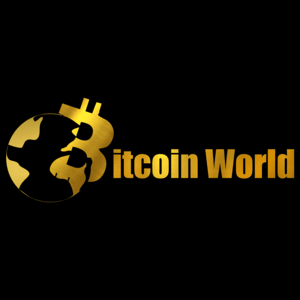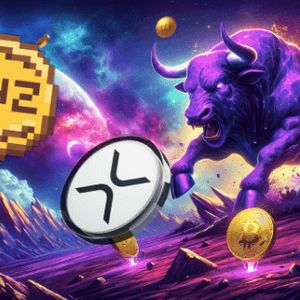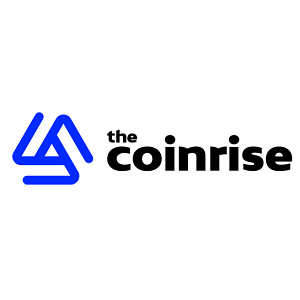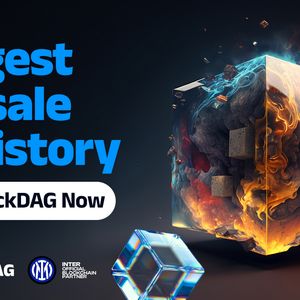BlackRock DLT Shares: SEC Filing Reveals Exciting Digital Future for Money Market Funds
6 min read
The world of finance is witnessing a fascinating convergence, and a recent move by the largest asset manager on the planet signals a potentially massive shift. BlackRock , managing trillions in assets, has taken a significant step towards integrating traditional finance with digital asset technology. The firm has filed with the U.S. Securities and Exchange Commission (SEC) to introduce a groundbreaking Digital Share Class for one of its colossal funds. This isn’t just any fund; it’s a $150 billion money market fund, making this development particularly noteworthy. What Exactly are BlackRock DLT Shares? According to reports, including insights from ETF analyst Henry Jim on X, BlackRock’s filing proposes a new share class specifically named ‘DLT Shares’. The ‘DLT’ here stands for Distributed Ledger Technology, the underlying technology powering blockchains. The core idea is to use blockchain technology to represent ownership of shares in the fund. Here are the key details emerging from the filing: Fund Involved: The filing pertains to a $150 billion money market fund managed by BlackRock. Money market funds are popular investment vehicles known for their stability and liquidity, typically investing in high-quality, short-term debt instruments. The New Class: The proposed share class is called ‘DLT Shares’, indicating its reliance on distributed ledger technology. Technology Use: The intention is to leverage blockchain technology to reflect ownership records of these DLT Shares. This suggests a move towards tokenization, where traditional assets are represented digitally on a blockchain. Key Partner: The Bank of New York Mellon (BNY Mellon) is designated as the sole distributor for these DLT Shares. BNY Mellon has been increasingly active in the digital asset space, offering crypto services to institutional clients, making them a logical partner for this initiative. This move by BlackRock, often seen as a bellwether for institutional adoption, is a strong indicator of the growing interest in leveraging blockchain technology for traditional financial products. Why Tokenized Assets for Money Market Funds? The concept of Tokenized Assets is gaining traction across the financial industry. Applying this to money market funds offers several potential advantages that could modernize and enhance these traditional investment vehicles. Tokenization essentially breaks down the ownership of an asset into digital tokens recorded on a blockchain. For money market funds, this could mean: Increased Efficiency: Settlement times could potentially be reduced from days to minutes or even seconds, facilitated by the near real-time nature of blockchain transactions. Enhanced Transparency: Ownership records on a public or permissioned blockchain could offer greater transparency and auditability. Improved Accessibility: While this specific filing targets institutional investors through BNY Mellon, tokenization generally holds the promise of making assets more accessible and potentially enabling fractional ownership more easily in the future. Greater Liquidity: Tokenized assets can theoretically be traded 24/7 on digital asset platforms, potentially increasing liquidity compared to traditional trading hours. Streamlined Processes: Automation of certain processes like dividend distribution or redemptions could become more efficient through smart contracts. By creating a Digital Share Class , BlackRock is exploring how these blockchain-native benefits can be applied to a highly regulated and widely used traditional financial product like a money market fund. The Significance of the SEC Filing Any major financial product launch in the U.S. requires regulatory approval, and an SEC Filing is a critical step in that process. BlackRock’s decision to file with the SEC for the DLT Shares is highly significant for several reasons: Regulatory Engagement: It shows BlackRock is actively engaging with regulators regarding the use of blockchain technology in mainstream financial products. This engagement is crucial for the broader adoption of tokenized assets. Precedent Setting: While not the first instance of exploring tokenization, a filing from an entity as large and influential as BlackRock for a fund of this size sets a powerful precedent. It signals to the market and other institutions that exploring tokenization is a serious and viable path. Potential Approval Pathway: The SEC’s response to this filing will be closely watched. A positive outcome could pave the way for similar initiatives from other asset managers and financial institutions. It helps define the regulatory landscape for tokenized securities. Institutional Confidence: The act of filing itself demonstrates BlackRock’s confidence in the potential of DLT to offer tangible benefits for fund management and ownership, even within the existing regulatory framework. The SEC’s review process will likely involve assessing how the proposed DLT Share class complies with existing securities laws, investor protection regulations, and operational requirements for money market funds. This filing is not just about BlackRock; it’s a test case for how regulators view the tokenization of traditional financial instruments. Bridging TradFi and Digital Assets This move by BlackRock represents another important bridge being built between traditional finance (TradFi) and the digital asset space. For years, the crypto world has envisioned a future where assets of all kinds are tokenized and traded on blockchains. BlackRock’s initiative brings that vision closer to reality for institutional-grade products like Money Market Funds . It’s a different approach than directly investing in cryptocurrencies like Bitcoin or Ethereum. Instead, it’s about applying the technology that underpins cryptocurrencies (DLT) to existing, regulated financial products. This approach might be more palatable to traditional institutions and investors who are comfortable with established fund structures but see the potential efficiency gains offered by DLT. The partnership with BNY Mellon, a major player in custody and distribution for traditional assets, further underscores this bridging effort. They bring the necessary infrastructure and relationships within the traditional financial ecosystem to make DLT Shares accessible to the intended audience. Challenges and Considerations While the potential benefits are significant, introducing a Digital Share Class for a money market fund also comes with challenges: Regulatory Clarity: Although the SEC filing is a step towards engagement, complete regulatory frameworks for tokenized securities are still evolving globally. Technology Integration: Integrating DLT seamlessly with existing financial infrastructure requires significant technical effort and robust security measures. Interoperability: Ensuring these DLT Shares can interact with different platforms or other tokenized assets in the future will be key. Market Adoption: While BlackRock’s name carries weight, convincing a broad base of institutional investors to adopt a new share class based on relatively new technology will take time. Security Risks: Like any digital system, the DLT platform used will need stringent security protocols to protect against hacks or errors. These challenges are not insurmountable, but they require careful planning, robust technology, and ongoing dialogue with regulators and market participants. What Does This Mean for the Future? BlackRock’s SEC Filing for DLT Shares could be a harbinger of things to come. If successful, it could: Encourage other large asset managers to explore tokenization for their funds. Accelerate the development of infrastructure for tokenized securities. Increase institutional comfort levels with blockchain technology beyond just crypto spot ETFs. Potentially lead to the tokenization of other types of funds and assets, from bonds to real estate. This move solidifies the trend that distributed ledger technology is not confined to native cryptocurrencies but is increasingly being viewed as a foundational technology for the future of finance. It’s about creating more efficient, transparent, and potentially more accessible ways to manage and transfer value. Actionable Insights for Observers For those watching the intersection of traditional finance and digital assets, BlackRock’s DLT Shares filing provides several points of focus: Monitor the SEC Review: The outcome and details of the SEC’s review process will provide crucial insights into the regulatory path for tokenized securities. Watch BNY Mellon’s Role: As the sole distributor, BNY Mellon’s implementation and marketing efforts will be key to the adoption of these DLT Shares. Look for Similar Filings: See if other major asset managers follow suit with their own tokenization initiatives. Understand the Technology: While not needing to be a blockchain expert, understanding the basics of how DLT can represent asset ownership is valuable. Assess Market Reaction: Observe how institutional investors respond to the availability of this new share class. This development isn’t just news; it’s a case study in how large, established financial players are beginning to integrate disruptive technologies into their core offerings. Summary: A Digital Leap for BlackRock and Money Markets In conclusion, BlackRock’s filing with the SEC to launch a Digital Share Class , known as DLT Shares, for its $150 billion Money Market Funds is a landmark event. It signifies a serious institutional exploration into leveraging distributed ledger technology to potentially enhance the efficiency, transparency, and accessibility of traditional financial products. With BNY Mellon as the distributor and the SEC Filing process underway, this initiative is poised to offer valuable insights into the future of Tokenized Assets and the ongoing convergence of TradFi and digital finance. It underscores the growing belief that DLT is not just about cryptocurrencies, but a powerful tool for modernizing the global financial system. To learn more about the latest tokenization trends and institutional adoption in the digital asset space, explore our articles on key developments shaping the future of finance.

Source: Bitcoin World



